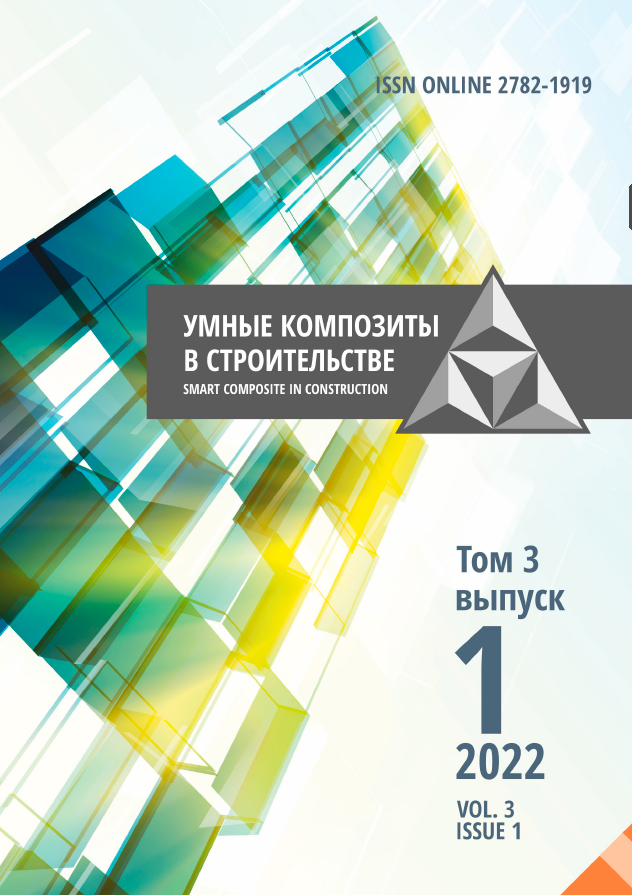Yaroslavl, Yaroslavl, Russian Federation
The article is devoted to the issue of mathematical modeling as a method of theoretical investigation of the processes of biological corrosion of concrete in liquid media. The results of experimental studies on the effect of microorganisms on the general corrosion process occurring in concrete in aqueous media are presented. Modeling of diffusion processes characteristic of biocorrosion of concrete structures is presented. For the first time, a model of mass transfer processes in an unlimited two-layer plate is calculated, which is a system of partial differential equations of parabolic type with boundary conditions of the second and fourth kind. The proposed mathematical model takes into account the kinetics of the processes of increasing and decreasing biomass on the concrete surface. The perspective of application of the developed mathematical model of concrete biocorrosion in liquid media is reflected. A number of numerical experiments have been carried out confirming the adequacy and universality of the proposed mathematical model.
concrete, microorganisms, diffusion, mass transfer, boundary conditions
1. Jamaguchi S., Aayama V. (1973) Zumbakteriologischen korrosions produktvom Betoneisen in Untermeertunnel, Werkst. und Korros, (24), pp. 209-210.
2. To the 150th anniversary of the birth of Academician Boris Lavrentievich Isachenko (years of life 15.06.1871-17.11.1948) (2021) Microbiology, 90(4), pp. 506-508. DOI:https://doi.org/10.31857/s002636562104008x
3. Fedosov S.V., Rumyantseva V.E. & Loginova S.A. (2020) Biodegradation of hydrotechnical concrete, Smart composites in construction, 1(1), pp. 45-55. URL: http://comincon.ru/index.php/tor/article/view/12/5
4. Svetlov D.A., Kachalov A.N. (2019) Microbiological corrosion of building materials, Russian journal of transport engineering, [online] 4(6). Available at: https://t-s.today/PDF/19SATS419.pdf (in Russian). DOI:https://doi.org/10.15862/19SATS419
5. Lebedeva K.K., Nyanikova G.G. & Tsarovtseva I.M. (2021) Microbiological analysis of samples of materials placed in the coastal zone of the Barents Sea, Bulletin of the Saint Petersburg State Institute of Technology (Technical University),(57), pp. 53-58. DOI:https://doi.org/10.36807/1998-9849-2020-57-83-53-58
6. Laptev A.B., Lutsenko A.N., Perov N.S. & Bukharev G.M. (2016) The experience of FSUE "VIAM" on the study of biocorrosion in seawater, Pipeline transport. Theory and practice, (4), pp. 28-32.
7. Inaba Y., Xu S., Vardner J.T., West A.C. & Banta S. (2019) Microbially influenced corrosion of stainless steel by Acidithiobacillus ferrooxidans supplemented with pyrite: importance of thiosulfate, Applied and environmental microbiology, 85(21). DOI:https://doi.org/10.1128/AEM.01381-19
8. Storozheva M.E., Denisova Ya.V. (2020) Biocorrosion of underground structures: the main causes and protection of structures, Scientific notes of the Sakhalin State University, (15-16), pp. 109-113.
9. Gurbanov A.N. (2021) The main directions of protection of equipment and pipelines from biocorrosion, Bulletin of the Azerbaijan Engineering Academy,13(3), pp. 74-82. DOI:https://doi.org/10.52171/2076-0515202113037482
10. Kochina T.A., Kondratenko Yu.A., Shilova O.A., Vlasov D.Yu. (2022) Biocorrosion, biofouling and modern methods of combating them, Physicochemistry of the surface and protection of materials, 58(1), pp. 86-112. DOI:https://doi.org/10.31857/S0044185622010120
11. Makita H. (2018) Iron-oxidizing bacteria in marine environments: recent progresses and future directions, World J Microbiol Biotechnol, 34(8), p. 110.
12. Smirnov V.F., Svetlov D.A., Zotkina M.M., Svetlov D.D., Bazhanova M.E., Vildyaeva M.V & Zakharova E.A. (2021) Ecological aspects of biocorrosion and increasing the biostability of building materials, Bulletin of the Volga State Technol. un-ta. Series: Materials. Constructions. Technologies, (4), pp. 14-26. DOI:https://doi.org/10.25686/2542-114X.2021.4.14
13. Erofeev V.T., Al D.S., Mishunyaeva O.A. (2016) Ways to increase the durability and reliability of reinforced concrete structures, Safety of the Construction Fund of Russia. Problems and solutions, (1). pp. 13-19.
14. Telegdi Yu., Shaban A., Trif L. (2020) Review. Microbiological corrosion and characteristics of biofilms, Corrosion: materials, protection, (6), pp. 1-19. DOI:https://doi.org/10.31044/1813-7016-2020-0-6-1-19
15. Fedosov S.V., Loginova S.A. (2020) Mathematical model of concrete biological corrosion, Magazine of Civil Engineering, 7(99). p. 9906.
16. Rumyantseva V.E., Loginova S.A., Kartseva N.E. (2021) Mathematical modeling of corrosion of concrete structures in biologically aggressive environments, Bulletin of Cherepovets State University, 3(102). pp. 56-67. DOI:https://doi.org/10.23859/1994-0637-2021-3-102-4







